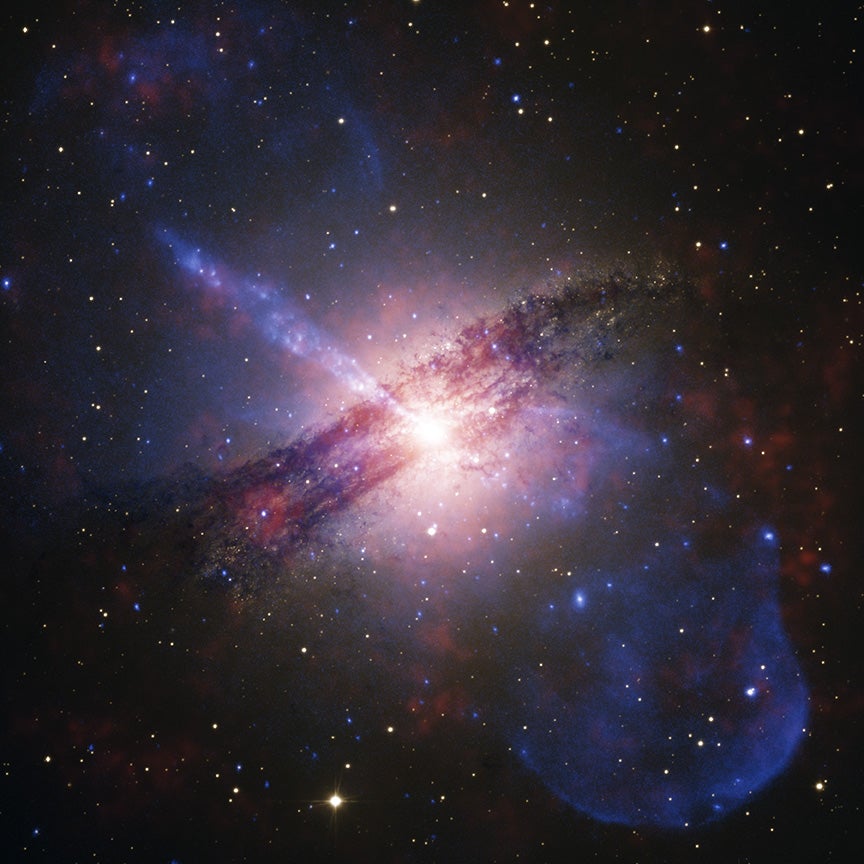
Centaurus A (Cen A), located some 12 million light-years away in the constellation Centaurus the Centaur, is the fifth-brightest galaxy in the night sky and hosts an exceptionally powerful supermassive black hole at its core.
This oddly shaped galaxy was the latest target of two of NASA’s orbiting X-ray telescopes, the Chandra X-ray Observatory and the Imaging X-ray Polarimetry Explorer (IXPE) satellite. The composite image seen here was also supplemented with optical light captured by the ground-based European Southern Observatory in Chile.
Launched at the end of 2021, IXPE has already snapped impressive photographs of the supernova remnants Cassiopeia A and the Crab Nebula, as well as other targets. This space observatory’s purpose is to reveal information about a property of light called polarization, which helps astronomers better understand the speeds and energies particles reach after being accelerated by extremely powerful cosmic objects, such as black holes.
In this combined image, IXPE’s view of Cen A reveals an extremely luminous core (white-yellow), while the Chandra X-ray Observatory (blue) highlights a sharp jet that extends some 13,000 light-years toward the upper left. The Chandra data also shows two giant lobes of energized material around, as well as opposite, the galaxy’s jet. Meanwhile, the European Southern Observatory’s image highlights the dark strands of light-obscuring gas and dust that wrap around the center of Cen A, possibly suggesting a collision with a small galaxy millions of years ago.
Researchers targeted Cen A with IXPE in an attempt to understand why the galaxy’s jets are emitting so many X-rays. But so far, IXPE’s polarization data does not reveal much beyond suggesting the particles that are producing the X-rays are more massive than electrons, according to a Chandra Observatory news release.
Nonetheless, scientists will continue to analyze the new data for further clues about Centaurus A, as well as its beautiful jet.









